The significance of Soviet space exploration's posters
Submitted by Anonyme (non vérifié)We saw that the conquest of space was theorized by Tsiolkovsky (see Life, Matter, the Universe, part 4: Konstantin Tsiolkovsky, from the Biosphere to the Milky Way) and that it was an important part of the communist conception of the universe.
Unfortunately, it is the revisionists in the USSR who have benefited from these efforts; Tsiolkovsky itself will die long before the introduction of rockets he had planned.
And where some posters of the conquest of space are amazing, it is that they reflect the initial communist view, revisionism appropriating itself the “technical” prestige, but havint not yet completely erased, the cultural, ideological value of space exploration for communism.
Here's an overview.
On this poster, it says: "We will open the distant worlds." This is an important point: the conquest of space was not intended to only bring someone into space. The issue was not technical, but ideological: the aim is the conquest of space, the spread of life on other planets.
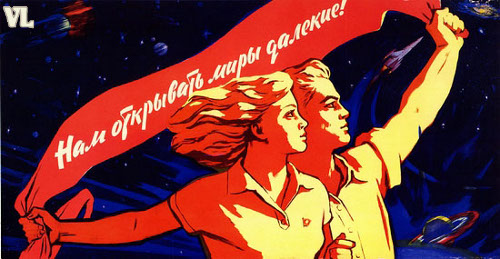
This second image explains: “Through the worlds and ages” We find the same spirit: the conquest of space opens a new era.
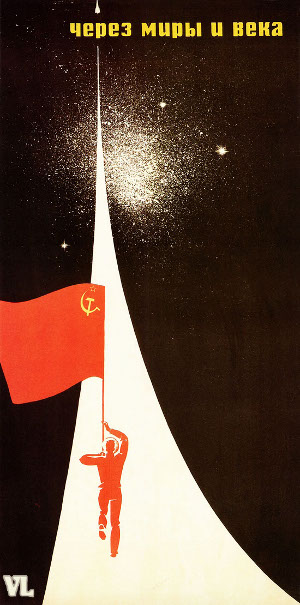
Naturally, it is the socialist human being which bring to this new era. This poster says: “Soviet man – be proud, you opened the road to stars from Earth!”
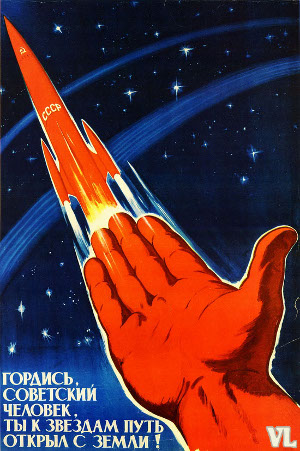
Here, this soviet man says in the same way: “To the Sun! To the stars!” This shows the scale of ambition at the base of the conquest of space as understood by the Communists.
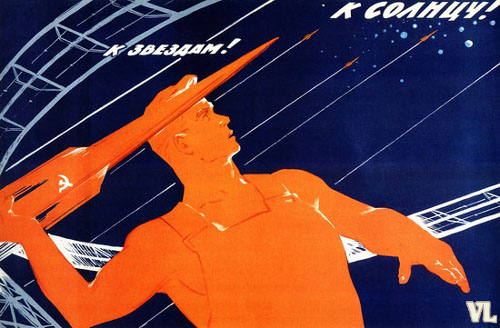
Hence also this poster which says: “Glory to the conquerors of the universe!” This is the universe itself is the goal ...
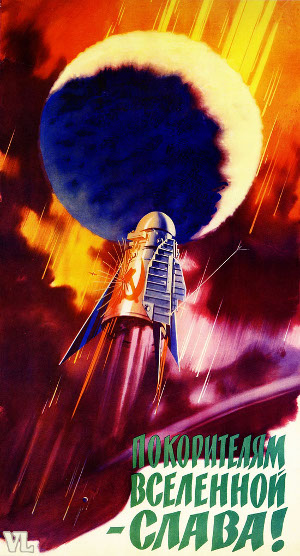
This poster says and “To the glory of communism!”: Here we have the basic design that communism is not a simple “social” question, "social", but a universal design.

The origin of the process is emphasized in several posters. It says this: “Sons of October - Pioneers of the Universe!” which has the merit of being very clear.
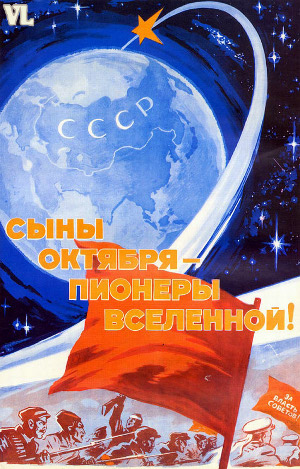
The poster says here: “October opened the road to space!”
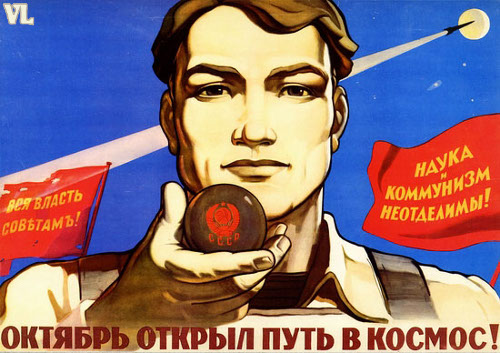
This poster is less clear: “With Lenin’s name!” is it possible to read. This can be seen as a logical conclusion of socialism, like an influence of the revisionist cult of the “technical” aspect.

We can see here the same ambiguity. The revisionists believed, or pretended to believe, that the USSR would know communism very quickly. Here, this is what is implied: “In 20th century the rockets race to the stars, the trains are going to the lands of achievements!”
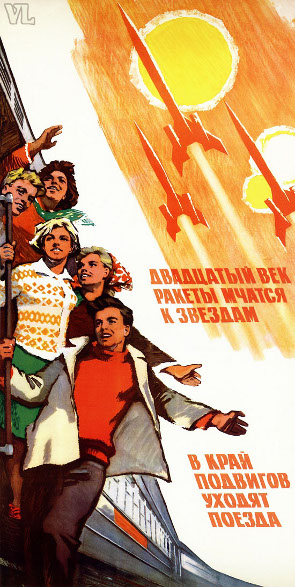
The conquest of space is, as such, an integral part of the revisionist ideology, which was necessary to pretend to be still communist. The failure of the space race clearly expresses the failure of revisionism. But before the expression of the failure, there is the momentary victory thanks to advances in the Stalin era. The conquest of space is popular and used by revisionism. We read on this poster: Happy New Year kids!
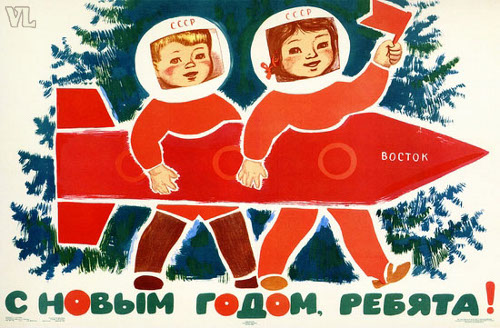
Mobilization of the younger generation is requested: From student’s models to spaceships!
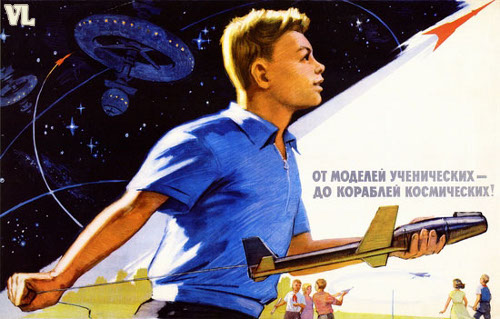
The peaceful dimension is emphasized, because Communism unites humanity, but also because revisionism will use this to require pacifism and the abandonment of the principle of revolution. The poster says here “In the name of peace.”

“Navigation in space is open!” is it possible to read here, with the flags of Soviet republics.
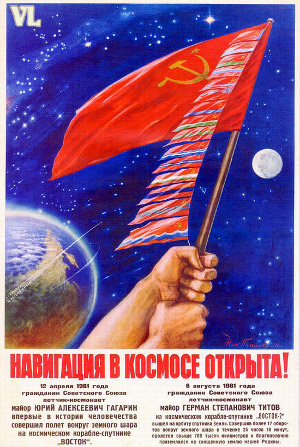
Here, we read : “Fatherland! You lighted the star of progress and peace. Glory to the science, glory to the labor! Glory to the Soviet regime!”
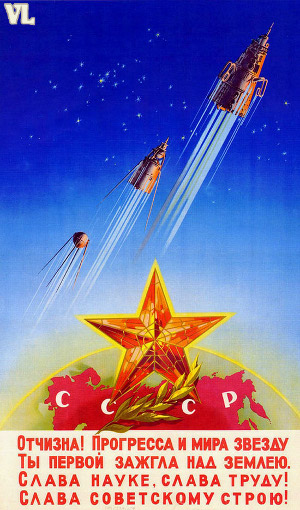
In the same way, we read here : “Glory to the workers of Soviet science and technology!” We can note that the absence of women in these posters is significant of patriarchy in revisionism.

It is also clear in this poster,where, if the worker says “Into the space!”, we also have two heads of cosmonauts, and an “heroic” dimension which is very masculine, another poster will even speak of “knights” of modern times.
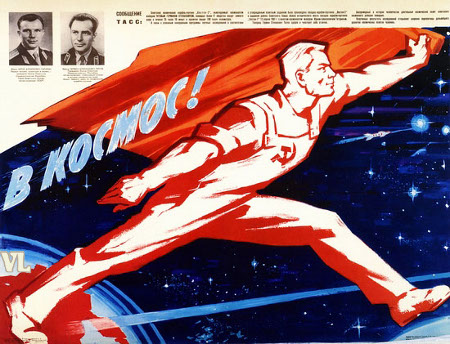
The following poster is equally wrong. It states that “The way for man is open!” except that precisely dogs sent into space have not been recovered as shown on the poster. They were sacrificed, following the principle of vivisection.
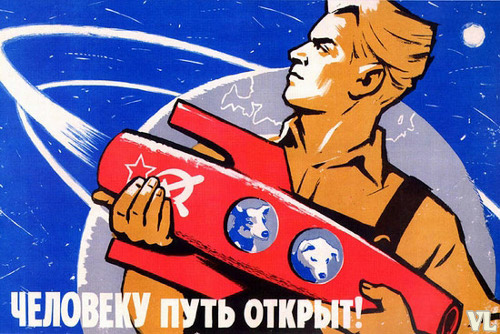
If the first posters were very clear, we see the problems here. The door open to revisionism, to the theory of 'productive forces” is also visible here: “We were born to make the fairy tale come true!”

This is here the ambiguity of the call to “Conquer the space!”; we do not know any more if this is an expression of universal communism, or simply a technical call.

We find this wrong dimension in this poster, where it is said : “Glory to the Soviet people – the pioneer of space!”

In this poster, this is similarly naive: “In the name of peace and progress!”
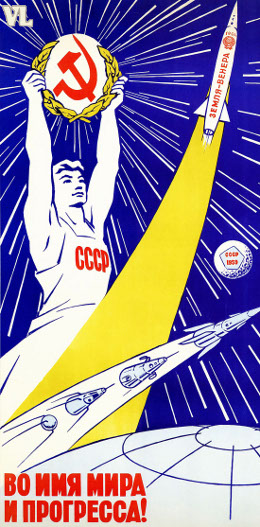
Finally, we have in this poster an expression of idealism in the spirit of revisionism: “Our triumph in space is the hymn to Soviet country!”
In fact, it is true that this is the hymn chanted as a glorious expression of the advance of Communism on Earth, advance leading to space exploration.
But here it is the opposite which is highlighted, in the spirit of idealism in accordance to the cult of “technical” characterizing revisionism. The other posters become afterwards worse and worse in this idealism.
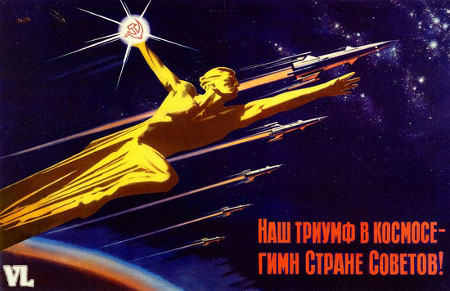
We could easily see how the posters here revealed the communist world outlook for some, while others expressed revisionism, a trend prevailing of course more and more in the USSR.
This is something that really helps to understand the struggle against revisionism, in terms of world conception.
